 April 2, 2015 John E. Ross, KD8IDJ, Editor
| ||||||
ARRL Headquarters Will Be Closed on Good Friday, April 3: ARRL Headquarters will be closed on Good Friday, April 3. There will be no W1AW bulletin or code practice transmissions and no ARRL Audio News on that day. ARRL Headquarters will reopen Monday, April 6, at 8 AM Eastern Daylight Time. We wish everyone a safe and enjoyable holiday! The FCC's "Ham Guy," Bill Cross, W3TN, to Retire on April 3 Amateur Radio's point man at the FCC is retiring. Bill Cross, W3TN, officially a "program analyst" in the Commission's Wireless Telecommunications Bureau (WTB), is stepping down on April 3, after nearly 4 decades at the FCC. Many radio amateurs have had the opportunity to meet Cross when he conducted the once popular Dayton Hamvention Amateur Radio forum, which has since fallen victim to FCC budget trimming.
"Most people [at the Bureau] know me as 'The Ham Guy,'" Cross quipped in an interview with ARRL, "and they send anything relating to Amateur Radio to me -- as quick as they can." Cross said he did consider making April 1 his retirement date but, "I didn't want to take any chances." Cross started with the Amateur Radio Group in what was then the Private Radio Bureau. That morphed into the WTB when other services were added in 1989. Prior to that, he worked in the Common Carrier Bureau -- now the Wireline Competition Bureau -- and his academic background in engineering and economics came in handy. A ham since 1968, the married father of two said he's still active on the air, strictly on HF SSB and CW, and he hopes to expand his time for ham radio once away from the daily grind. He has achieved DXCC Honor Roll and actively participates in the Islands on the Air program (IOTA). When he arrived at the FCC in 1976, Cross didn't anticipate making it a career. But in time, his hobby became his work, and over the years he witnessed considerable change in Amateur Radio. The Commission's 2007 decision to drop Morse code as a requirement for obtaining an Amateur Radio license was one example. "We heard that fabric of the universe had become unglued," he said, "but it didn't." CW seems to be used much more than it was before 2007, he said, and some DX or IOTA stations are CW only. Cross acknowledged that Amateur Radio rule making proceedings at the FCC move with seeming glacial torpor but pointed out that the Amateur Service competes with an incoming barrage from other services and bureaus. "Amateurs have a view that the Commission has three bureaus -- the Bureau of Ham Radio, the Bureau of All Other, and the Bureau of Administration," he said. "I understand why they wish it was that way, but it's not."
Among the disappointments for Cross has been the rise in questionable on-the-air behavior, including intentional interference with DXpeditions, which he believes reflects such less-desirable societal trends as road rage. "People lose perspective," he said. "No one lives or dies, if they don't work Navassa Island." FCC budget cutbacks will lead to less enforcement, he said, and with stretched resources, "something's gotta give." That applies in Cross's own Bureau. When he steps down on April 3, no new "Ham Guy" is standing in the wings to replace him. "The plan is to divide up my work among other staff members, based on topic," he said. Waxing philosophical, Cross said people choose to get into ham radio as something enjoyable and fun. "When the joy and the fun go out of it, and it becomes a frustration, it might be time to take a step back," he advised. "Find a new aspect of the hobby. If it doesn't make you happy, there's something wrong. There's something for everyone. Just have fun." And Bill Cross plans to do just that. Oklahoma Amateur Radio Volunteers Activate Net to Track Severe Weather Amateur Radio SKYWARN volunteers in Oklahoma went on alert March 25 as severe thunderstorms sparked tornadoes. The Southwest Independent Repeater Association (SWIRA) and Tulsa Region SKYWARN nets were active in support of tornado warnings in both the Oklahoma City and Tulsa Metropolitan areas. No Amateur Radio Emergency Service (ARES) activation was required, however.
Oklahoma Section Emergency Coordinator Mark Conklin, N7XYO, said that ARES-OK Tulsa Region was put on standby. "No communication support was requested by served agencies," he said. "Other than some local cell service overload, normal communications were up and working." The WX5TUL Tulsa National Weather Service SKYWARN Net activated on VHF and UHF, with approximately 25 stations checking in. Weather spotters reported four tornadoes, two causing major damage and injury, along with large and frequent severe hail, minor street flooding and significant damage due to straight-line winds, causing widespread power outages. The severe weather has been blamed for at least one death. Colston said the SWIRA net control stations received reports -- at times under challenging conditions -- that were relayed to the National Weather Service office in Norman. "Both the Tulsa and Norman offices have Amateur Radio stations," he pointed out. "Both encourage SKYWARN and Weather Ready Nation initiatives in their service areas."
Conklin said that the Tulsa Amateur Radio Club (TARC) UHF Superlink System is used for SKYWARN traffic outside the Tulsa Metro area, while TARC's VHF repeater handles SKYWARN net traffic inside the Tulsa Metro area. A preliminary damage assessment from the National Weather Service Office in Norman confirmed more than one tornado, the most severe being in Moore. The NWS survey rated damage from the tornado as "high-end EF1." Widespread damage also resulted from winds of from 70 to 80 MPH, the NWS said. Read more. Puerto Rico ARES Takes Part in Caribe Wave/LANTEX 2015 Exercise Amateur Radio Emergency Service (ARES) volunteers in Puerto Rico took part in the 2015 Caribe Wave Large Atlantic Tsunami Exercise (LANTEX) -- an annual tsunami drill for the US East Coast, Canada, the Gulf of Mexico, and the Caribbean Basin. The exercise involved This year's exercise offered two possible scenarios: An earthquake-generated tsunami off the north coast of Panama, and a sub-marine landslide off the coast of Florida. The Puerto Rico Seismic Network chose the Panama scenario. At 10:04 AM Eastern Time, the Emergency Alert System (EAS) was activated on broadcast and cable TV outlets to announce the "situation" -- with reminders that it was only a drill. An hour later, siren systems were tested to verify how well they performed in coastal areas. Also, many government, public, schools, and senior institutions in different cities ran their own evacuation drills to test their preparedness in getting people to the nearest local refuge. The PREMA activated all 12 of its zones. Each zone is equipped with a Kenwood TS-2000, funded through a federal grant. The main responsibility of radio amateurs was to gather reports from other amateur stations around the island regarding how they were alerted: Broadcast radio, TV, cable, or other means, such as sirens. The information was delivered to PREMA Headquarters for post-exercise evaluation session that will involve all of the involved agencies.
The exercise made use of two repeaters -- one in Jayuya, the highest point on the island and equipped with emergency power, and the other in Cayey. Tito Colón, WP4CBC, and Johnny Figueroa, WP4CXG, served as net control stations, and many hams throughout Puerto Rico participated in the exercise -- helping to renew their interest in emergency communication. PREMA Director Miguel A. RÃos Torres called LANTEX 2015 a great success, with performance within parameters established by the agency. -- Thanks to Angel Santana, WP3GW, Puerto Rico Section Public Information Coordinator Utah Group Puts Broadband-Hamnet to Work for Food Project A small band of Amateur Radio volunteers in Utah's Salt Lake Valley successfully used a broadband Wi-Fi network set up on the 2.4 GHz amateur band to help coordinate the Boy Scouts of America's (BSA) "Scouting for Food" project on March 21. Scouting for Food is the Boy Scouts' annual community service event, in which Scouts collect items
for donation to a food bank. Local radio amateurs provide both voice and digital mode communication. This year for the first time they used a Broadband-Hamnet⢠(BBHN) system that coupled modified wireless router gear operating on amateur frequencies to create a peer-to-peer Wi-Fi network to share audio and video over a generous patch of real estate. BBHN is a descendent of the former ARRL High Speed Multimedia (HSMM) Working Group efforts, earlier known as the "Hinternet" and pioneered by John Champa, K8OCL (SK), and others in the early 2000s. "[W]e would call it Wi-Fi on steroids!" said David Bauman, KF7MCF. The Utah hams linked 13 nodes across the valley to form a network "that is like a mini private Internet," Bauman explained. They then used this network to send live video and audio back to the BSA Headquarters, showing them what was happening at food drop-off sites and at the [truck dispatch] headquarters. Bauman called it "a huge step forward in technology from the old days of Morse code." Retired clergyman Robert Jelf, KG7OHV, of Magna, headed up the team. Just outside BSA Headquarters near the University of Utah, Brandon Bauman, KG7RWO, was able to watch via his laptop as volunteers miles away dropped off canned food items and as YRC freight dispatched trucks to pickup sites around the valley. Brandon was part of an Amateur Radio group that assists the Boy Scouts in the Scouting for Food Project each year by providing communications. This marked the first time BBHN technology was used to support the project in the Salt Lake Valley. Their Wi-Fi network, known as a wireless mesh network, was able to cover a large portion of the valley. "The farthest point from our hub site was 8.5 miles across the city through a narrow path lined with lots of manmade objects for signals to bounce off," Jelf said. "While the mesh group was used to show video of the dispatch of trucks and of truck trailers at collection points within the hub site path, collection took place throughout the Wasatch Front area and elsewhere in Utah." Read more. Amateur Radio to Have a Presence, Special Event at Preparedness Summit 2015 Amateur Radio will be part of the program when Preparedness Summit 2015 convenes April 14-17 in Atlanta. Special event station N4P will also be on the air from the conference location. The theme of this 10th Preparedness Summit is "Global Health Security: Preparing a Nation for Emerging Threats."
Preparedness Summit 2015 will once again offer an Amateur Radio licensing prep session on April 14, with testing the following day. A ham radio demonstration, "When All Else Fails, Amateur Radio Gets Through," will take place on April 14 as well. Special event station N4P will be on the air from the Preparedness Summit 2015 venue. Listen for N4P on or around 7.265, 14.265, 21.365, and 28.36 MHz. EchoLink activity using the Georgia Tech Radio Club's W4AQL call sign also will take place. A commemorative QSL card will be available for stations working N4P. The complete Preparedness Summit agenda and more information are on the conference's website. -- Thanks to Chuck Motes, K1DFS Two More Radio Amateurs Join International Space Station Crew
European Space Agency Astronaut Samantha Cristoforetti, IZ0UDF, will head back to Earth in May, after Kjell Lindgren, KO5MOS; Oleg Kononenko, RN3DX, and Kimiya Yui arrive at the ISS as part of a scheduled crew rotation. Cristoforetti has conducted several Amateur Radio on the International Space Station school contacts during her ISS duty tour. ARISS School Contact Proposal Window Open Until April 15 The Amateur Radio on the International Space Station (ARISS) program coordinator is seeking proposals from schools and ARISS is seeking formal and informal educational institutions and organizations, individually or working together, to host an Amateur Radio contact with an ISS crew member between January 1 and June 30, 2016. Crew scheduling and space station orbits will determine the exact contact dates. ARISS is looking for organizations that have the potential to draw large numbers of participants and can integrate the contact into a well-developed educational plan. Details on expectations, audience, proposal guidelines, proposal form, and dates and times of information sessions are on the ARRL website. Contact ARISS with any questions. Amateur Radio "EduTeam" Wows the Crowds at Georgia Super STEM Event Members of the North Fulton Amateur Radio League (NFARL) EduTeam in Fulton County, Georgia, offered students and other members of the public an opportunity to experience ham radio. The EduTeam hosted an Amateur Radio booth at the Sandy Springs Education Force's Super STEM (science, technology, engineering, and math) Event on March 5 at North Springs Charter High School.
That evening, Muir said, officials from the Sandy Springs Education Force as well as other members of the community visited. "Our booth was busy all day, tantalizing and educating our visitors with various aspects of Amateur Radio," she said, "especially about how much fun it is, and how easily it fits into STEM classrooms." Mike Cohen, AD4MC, and Wes Lamboley, W3WL, installed an antenna at the school, so visitors could make voice contacts on 20 and 10 meters. Chuck Catledge, AE4CW; Sam Wolff, KK4NVJ; Megan Brown, KM4HFY, and Eli Musgrave, KM4HFZ -- all Mill Springs Academy students -- assisted the guests in getting on the air.
John Kludt, K4SQC, set up his Mars Lander Amateur Radio Robotics Exploration Activity (MAREA) robot to simulate how NASA scientists use radio signals to control the movement of the Mars rovers. "John's MAREA clearly stood out with the students and other visitors to our booth," Muir said. He also showed a video of the Amateur Radio on the International Space Station (ARISS) contact at Mill Springs Academy. "We received rave compliments from the students, parents, teachers, and administrators who visited our booth," Muir said. "Several students from both the high school and middle school expressed interest in starting Amateur Radio programs at their schools." Muir said she hoped the positive feedback would help enlist teachers and schools to form ham radio clubs and help more students to become licensed. Read more. Amateur Radio Television Pioneer Don Miller, W9NTP, SK Amateur Radio television pioneer and past ARRL Central Division Director Don C. Miller, W9NTP, of Waldron, Indiana, died March 22. He was 91. An ARRL Life Member, he was licensed in 1943. In the 1960s, Miller was instrumental in developing slow-scan TV (SSTV) for ham radio, working with Cop MacDonald, VY2CM, and others. Miller wrote several articles on SSTV for QST. In 1972, Dayton Hamvention® honored Miller as Amateur of the Year. Miller served as the Central Division Director from 1977 until 1980.
During World War II, Miller served in the US Army Signal Corps before being recruited to work at the Trinity atomic weapons test site in New Mexico as part of the Manhattan Project. "I went to work one day and finally figured out that we were building a nuclear bomb. But that's all I knew about it," Miller told The Rushville Republican newspaper in 2007. Miller said he worked with J. Robert Oppenheimer, who oversaw the Manhattan Project. Miller also was a collector of Native American and other historical artifacts, and in 2014, FBI agents raided his Indiana home and confiscated objects alleged to have been collected in violation of federal and state laws and of several treaties. Miller's collection included artifacts from all over the world. He told investigators that he had began collecting as a youngster. In 1984, Miller and his wife, Sue, W9YL (SK), founded Wyman Research Inc, which developed and marketed Amateur Radio SSTV and ATV equipment. Wyman Research engineered the SSTV gear used onboard the Russian Mir space station. -- Thanks to The Shelbyville News; The Daily DX In Brief...
The K7RA Solar Update Tad Cook, K7RA, Seattle, reports: This week's numbers have average daily solar flux and sunspot number averages headed in opposite directions. For the March 26 through April 1 period, average daily sunspot numbers fell 6 points to 77.9, and average daily solar flux increased 13.3 points to 135.7, compared to the previous 7 days. Geomagnetic indices were quieter, with average daily planetary A index declining 10.7 points to 8.7, and average daily mid-latitude A index dropping 6.6 points to 7.7.
The latest short term prediction for solar flux has 130 and 135 for April 2-3, 125 for April 4-6, 130 for April 7-8, 140 for April 9, 145 for April 10-13, 140 on April 14, 135 for April 15-18, 130 on April 19, and 125 for April 20-22. Then solar flux sinks to a low of 120 for April 23-25 and hits a high of 150 on April 28 before declining again. Predicted planetary A index is 12, 20, and 15 for April 2-4, 8 for April 5-8, 5 for April 9-11, then 15, and 30 for April 12-13, 20 for April 14-16, 15 on April 17, 20 for April 18-19, 12 on April 20, 5 for April 21-22, 8 for April 23-24, 25 on April 25, and 29 for April 26-27. At 2328 UTC on March 31, the Australian Space Forecast Centre issued a geomagnetic disturbance warning. Increased geomagnetic activity is expected due to a high-speed solar wind from a coronal hole. The geomagnetic activity forecast is for active conditions on April 2 and unsettled conditions April 3. This weekly "Solar Update" in The ARRL Letter is a preview of the "Propagation Bulletin" issued each Friday. The latest bulletin and an archive of past propagation bulletins is on the ARRL website. In Friday's bulletin, we will track solar cycle progress with some new averages ending March 31. It looks like the 3-month moving average of sunspot numbers centered on February 2015 (containing all data from January 1 through March 31) puts us back at the August 2013 level. The highest monthly average sunspot number for this cycle was 174.6 in February 2014. For March 2015 the average was 61.7. Send me your reports and observations. -- Tad Cook, K7RA
Just Ahead in Radiosport
See the ARRL Contest Calendar for more information. Upcoming ARRL Section, State, and Division Conventions and Events
Find conventions and hamfests in your area.
. . .
Subscribe to...
Free of charge to ARRL members...
| ||||||
.JPG)
.jpg) Looking ahead, Cross said he can see a day when there may be only one Amateur Radio license class. "Do we really need three license classes anymore?" he asked. "I can see in the future the number of license classes decreasing again -- to two or maybe one -- because the differences really are not that much."
Looking ahead, Cross said he can see a day when there may be only one Amateur Radio license class. "Do we really need three license classes anymore?" he asked. "I can see in the future the number of license classes decreasing again -- to two or maybe one -- because the differences really are not that much."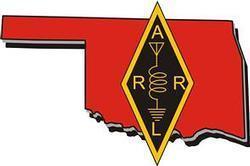 "March 25 was a busy afternoon and evening in Oklahoma," ARRL Oklahoma Section Manager Lloyd Colston, KC5FM, told ARRL.
"March 25 was a busy afternoon and evening in Oklahoma," ARRL Oklahoma Section Manager Lloyd Colston, KC5FM, told ARRL.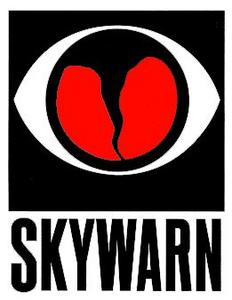 Colston said that as the storm progressed across the Tulsa Metro area, many of the early damage reports were passed to the Tulsa Area Emergency Management Agency via Amateur Radio. "Oklahoma Section radio amateurs reported on this storm system until it exited the state late that evening," he said. Colston and Conklin noted that many early "ground truth" and tornado observations came from SKYWARN spotters.
Colston said that as the storm progressed across the Tulsa Metro area, many of the early damage reports were passed to the Tulsa Area Emergency Management Agency via Amateur Radio. "Oklahoma Section radio amateurs reported on this storm system until it exited the state late that evening," he said. Colston and Conklin noted that many early "ground truth" and tornado observations came from SKYWARN spotters. some 50 nations. The aim of the March 25 exercise was to test the reliability of communication systems and protocols between centers of tsunami alerts and to help emergency management agencies to improve their preparedness in the event of a tsunami alert. Since 2010, Amateur Radio operators have played a role in the exercise, executed in conjunction with the Puerto Rico Seismic Network (RSPR), the Caribbean Warning Tsunami Exercise (Caribe Wave), FEMA, the Puerto Rico Emergency Management Administration (
some 50 nations. The aim of the March 25 exercise was to test the reliability of communication systems and protocols between centers of tsunami alerts and to help emergency management agencies to improve their preparedness in the event of a tsunami alert. Since 2010, Amateur Radio operators have played a role in the exercise, executed in conjunction with the Puerto Rico Seismic Network (RSPR), the Caribbean Warning Tsunami Exercise (Caribe Wave), FEMA, the Puerto Rico Emergency Management Administration (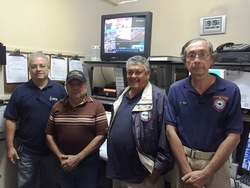
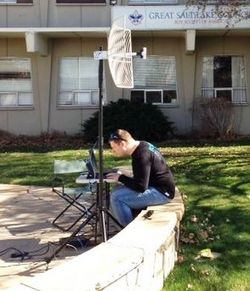
 "Global health security preparedness issues such as protecting against infectious disease, the health effects of climate change and extreme weather, and cybersecurity threats to critical infrastructure, impact all levels of governmental public health and healthcare agencies," a Preparedness Summit 2015 announcement explained. The National Association of County and City Health Officials (
"Global health security preparedness issues such as protecting against infectious disease, the health effects of climate change and extreme weather, and cybersecurity threats to critical infrastructure, impact all levels of governmental public health and healthcare agencies," a Preparedness Summit 2015 announcement explained. The National Association of County and City Health Officials (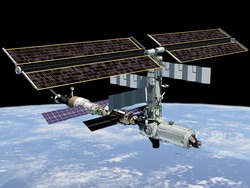 The ISS ham radio population expanded to three, following the arrival of NASA astronaut Scott Kelly and Russian cosmonauts Mikhail Kornienko, RN3BF, and Gennady Padalka, RN3DT, on March 28 (UTC). Kelly, 51, and Kornienko, 54, will remain aboard the ISS for 1 year -- the longest space mission ever assigned to a NASA astronaut.
The ISS ham radio population expanded to three, following the arrival of NASA astronaut Scott Kelly and Russian cosmonauts Mikhail Kornienko, RN3BF, and Gennady Padalka, RN3DT, on March 28 (UTC). Kelly, 51, and Kornienko, 54, will remain aboard the ISS for 1 year -- the longest space mission ever assigned to a NASA astronaut.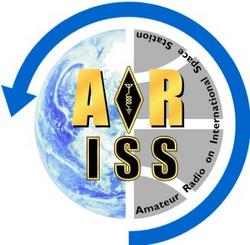 organizations that are interested in hosting an Amateur Radio contact with a member of the International Space Station crew. The US ARISS contact proposal window will remain open until April 15.
organizations that are interested in hosting an Amateur Radio contact with a member of the International Space Station crew. The US ARISS contact proposal window will remain open until April 15.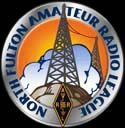 "The theme of this year's STEM Event was Communications Technology, so we were a perfect fit," said Martha Muir, W4MSA. "Waves of the North Springs students flooded our booth from the morning until early afternoon. Then it was time for students from the local middle schools."
"The theme of this year's STEM Event was Communications Technology, so we were a perfect fit," said Martha Muir, W4MSA. "Waves of the North Springs students flooded our booth from the morning until early afternoon. Then it was time for students from the local middle schools."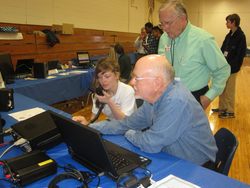
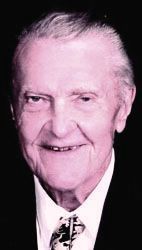
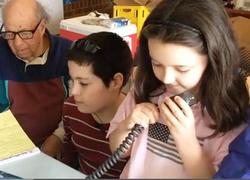 Young Ham's First Contact is via OSCAR Satellite: Eight-year-old radio amateur Hope Lea, KM4IPF, in Virginia,
Young Ham's First Contact is via OSCAR Satellite: Eight-year-old radio amateur Hope Lea, KM4IPF, in Virginia,  W7FG.net and Trueladderline.com Change Hands: Brian Duerr, WB2JIX -- operating as WB2JIX LLC -- has acquired the assets of W7FG.net and
W7FG.net and Trueladderline.com Change Hands: Brian Duerr, WB2JIX -- operating as WB2JIX LLC -- has acquired the assets of W7FG.net and 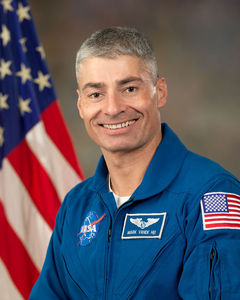 Astronaut Mark Vande Hei is Newest Astro-Ham: NASA Astronaut Mark Vande Hei is now KG5GNP. He attended license classes on March 11 and 12, passed the Technician exam the following day, and his call sign showed up in the FCC ULS database on March 24. Vande Hei is a member of the 20th NASA astronaut class and has qualified for a future flight assignment. -- Thanks to AMSAT News Service via Kenneth Ransom, N5VHO, and ARISS
Astronaut Mark Vande Hei is Newest Astro-Ham: NASA Astronaut Mark Vande Hei is now KG5GNP. He attended license classes on March 11 and 12, passed the Technician exam the following day, and his call sign showed up in the FCC ULS database on March 24. Vande Hei is a member of the 20th NASA astronaut class and has qualified for a future flight assignment. -- Thanks to AMSAT News Service via Kenneth Ransom, N5VHO, and ARISS.jpg) Nigel Cawthorne, G3TXF, is Single-Op Cass Award Recipient: Nigel Cawthorne, G3TXF, is the winner of the 2014 Single-Operator
Nigel Cawthorne, G3TXF, is Single-Op Cass Award Recipient: Nigel Cawthorne, G3TXF, is the winner of the 2014 Single-Operator 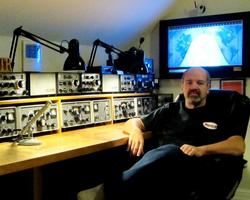 Rich Hallman, N7TR, Named Technologist of the Year: Well-known Nevada contester Rich Hallman, N7TR, has been named Technologist of the Year by Nevada's Center for Entrepreneurship and Technology (
Rich Hallman, N7TR, Named Technologist of the Year: Well-known Nevada contester Rich Hallman, N7TR, has been named Technologist of the Year by Nevada's Center for Entrepreneurship and Technology (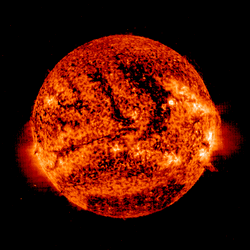 We saw four new sunspot regions over the past week, one each on March 26, 28, 29, and April 1.
We saw four new sunspot regions over the past week, one each on March 26, 28, 29, and April 1.







